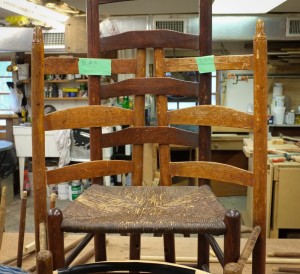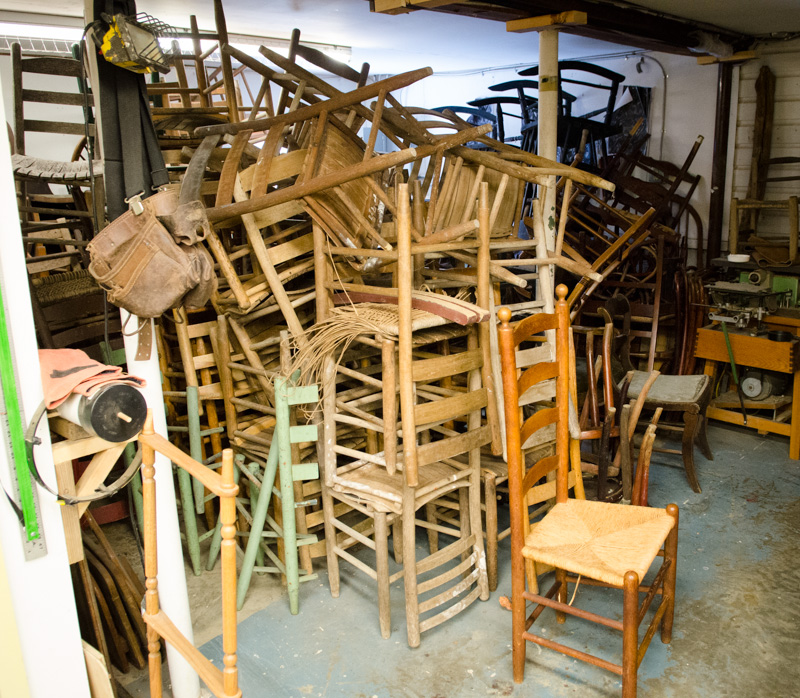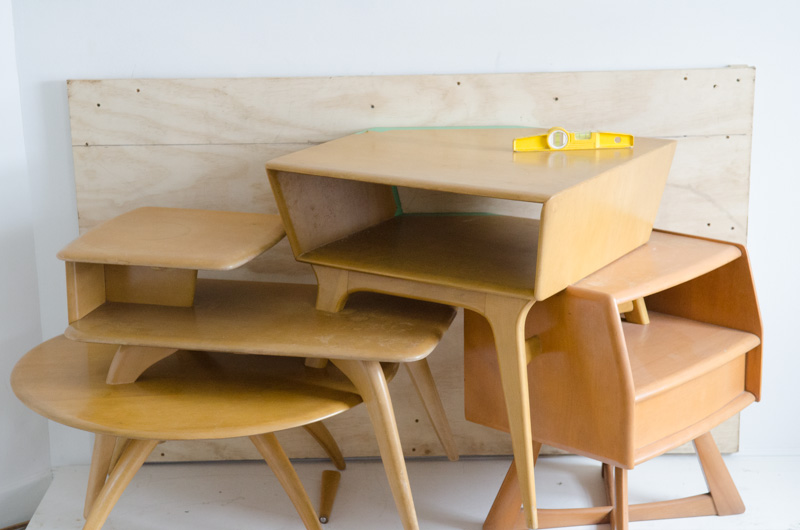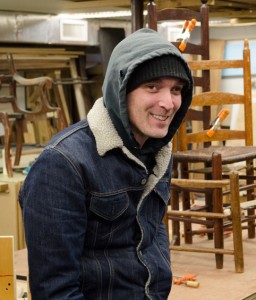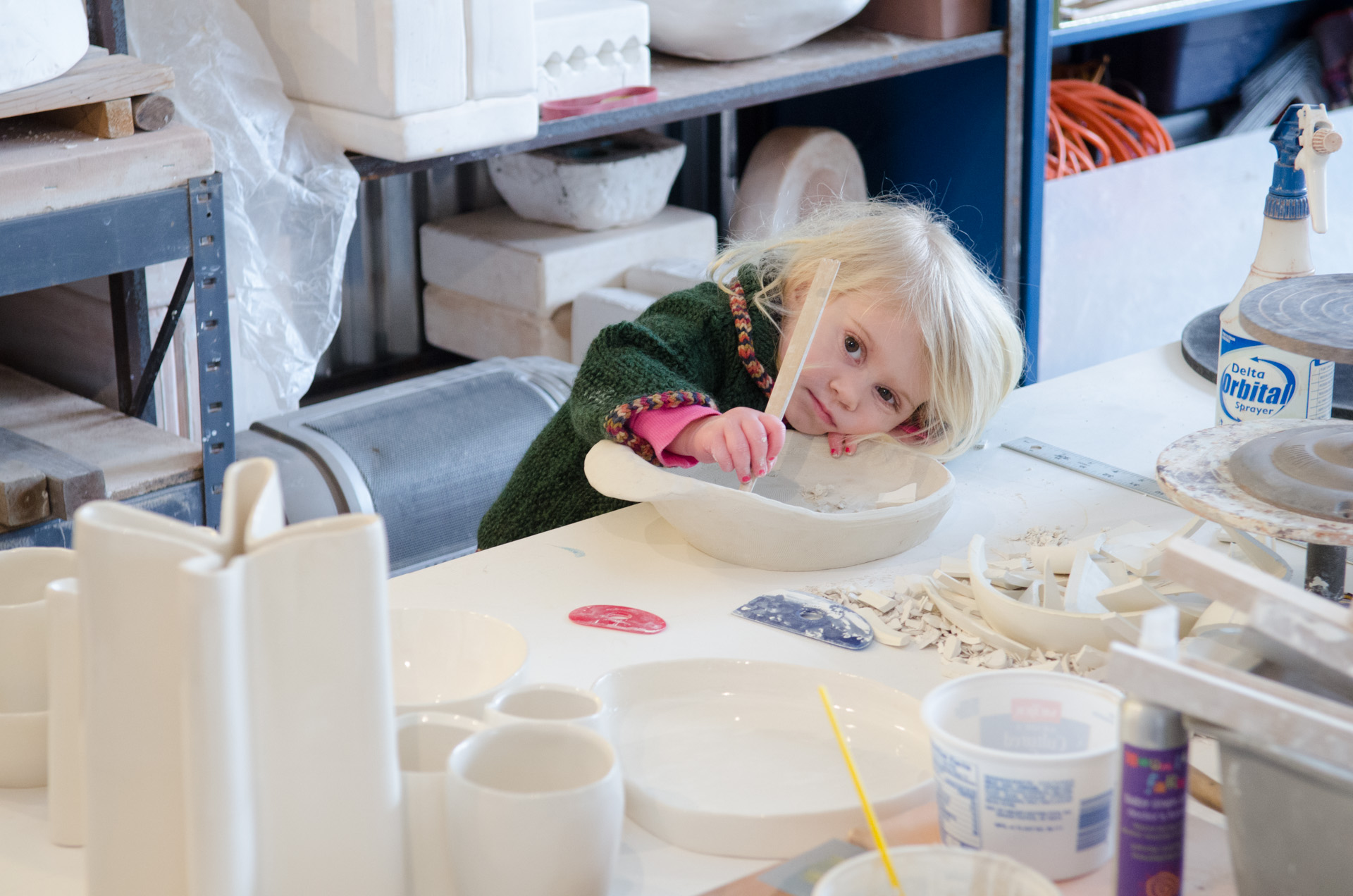
Okay, we couldn’t resist. This is resident artist David Eichelberger’s daughter, Louisa. It was a snow day and schools were closed in Mitchell County when we stepped into David’s studio for a visit. David and his wife, ceramist Elisa Di Feo, had turned on Alice in Wonderland for Louisa and her sister, Mena. The adults were attempting to get some work done.
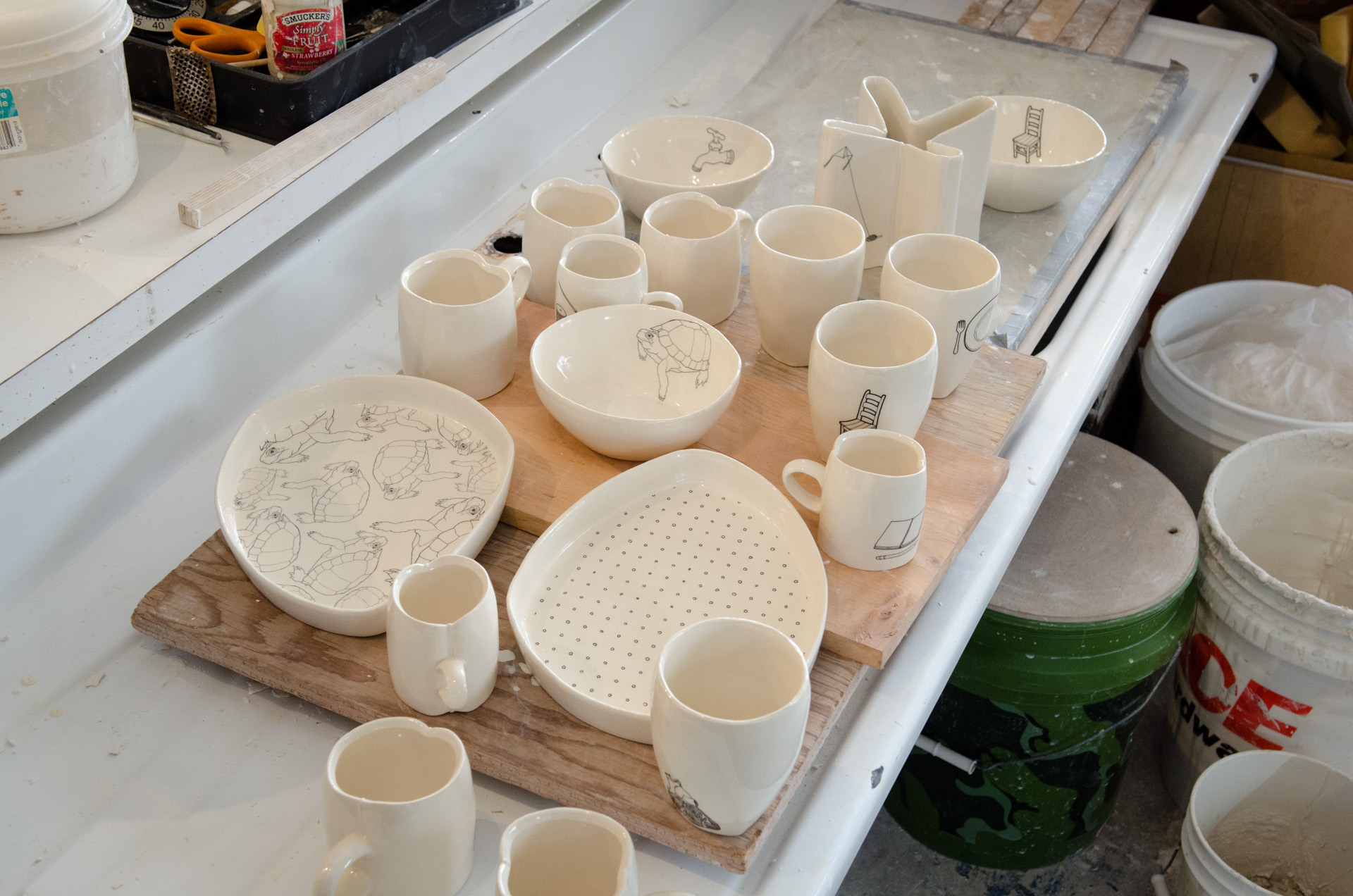
“It’s a bread and butter product line,” David noted, walking us through the cups, bowls, platters, and other ware he’s made in preparation for the New York International Gift Fair. The pieces are cast from molds, and then fired, and then glazed, and then fired again. Then David (or Elisa, who is helping the endeavor along), applies a laserprint decal to each piece. Finally, the pieces are fired again. Iron oxide from the printer toner interacts with the glaze. “The glaze under the image gets slightly molten, and it captures the iron oxide,” says David.
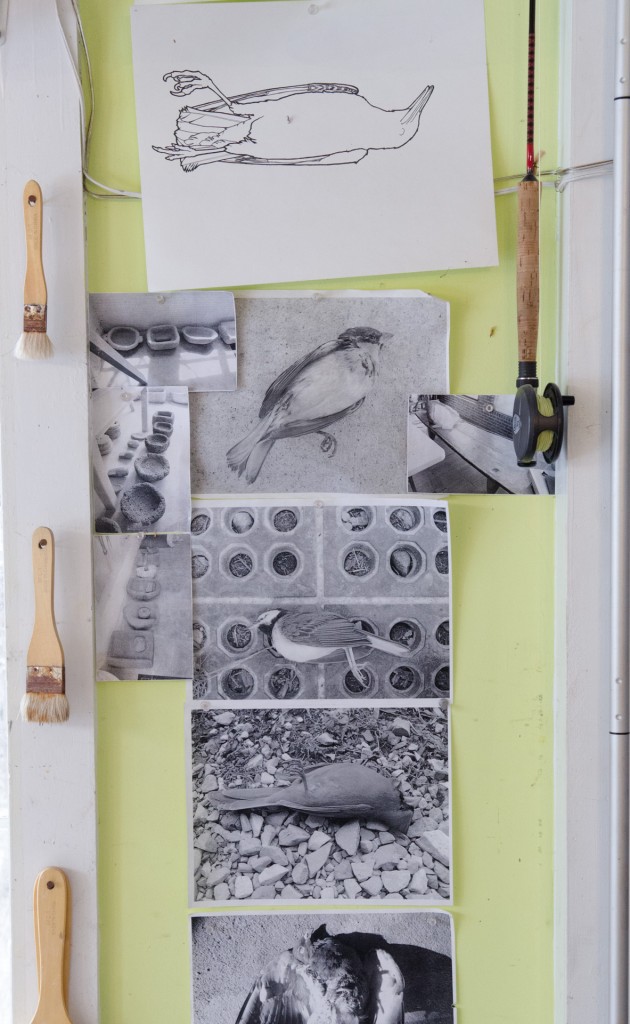 The resulting images on the vessels are casual and arresting: a fishhook, a frying pan. A turtle. A platter of turtles. Weird lures: a chair, a dead bird, an anatomically correct heart. “[The images] are everyday,” he says, “with a built-in plot. The user brings a story to it.” The drawings–the way they are drawn–evoke graphic novels, too. The objects feel removed from a panel, an “everyday” scene. Holding one of David’s cups, the image loses its primacy immediately to the feeling of the shape.
The resulting images on the vessels are casual and arresting: a fishhook, a frying pan. A turtle. A platter of turtles. Weird lures: a chair, a dead bird, an anatomically correct heart. “[The images] are everyday,” he says, “with a built-in plot. The user brings a story to it.” The drawings–the way they are drawn–evoke graphic novels, too. The objects feel removed from a panel, an “everyday” scene. Holding one of David’s cups, the image loses its primacy immediately to the feeling of the shape.
Meanwhile, in Alice in Wonderland, the March Hare looks at his watch and shouts, “I’m late! I’m late!” pulling the story into the next chapter.
The next chapter, for David (who completes his residency at Penland soon) is to remain in the area for awhile. Both he and Elisa have been adjunct instructors in Boone, and will stay on through Penland’s benefit auction, with David teaching an eight-week handbuilding workshop at Penland this spring and Elisa teaching at Penland in the summer.
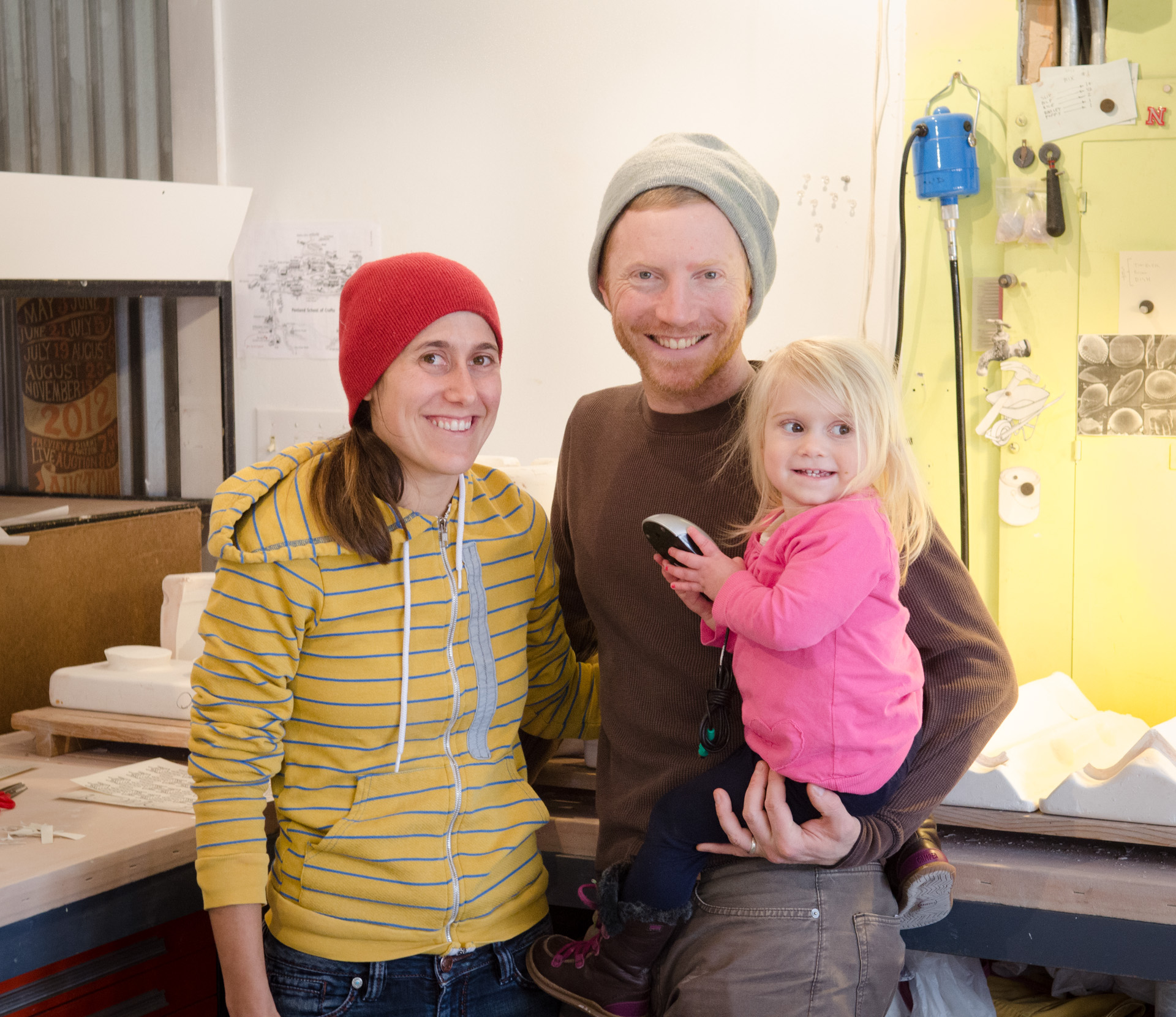 Both David and Elisa have worked a tricky balance the last three years: having a second child, creating their own work (David in residence, Elisa grabbing time in other studios), and working collaboratively on David’s pieces for the first time this winter. (“It’s Elisa’s turn next, David says, about the possibility of doing future residencies.) Their bread-and-butter studio collaboration will extend outward, too: David and Elisa plan to invite other clay artists, starting with Michael Klein, to make limited edition vessels with decals.
Both David and Elisa have worked a tricky balance the last three years: having a second child, creating their own work (David in residence, Elisa grabbing time in other studios), and working collaboratively on David’s pieces for the first time this winter. (“It’s Elisa’s turn next, David says, about the possibility of doing future residencies.) Their bread-and-butter studio collaboration will extend outward, too: David and Elisa plan to invite other clay artists, starting with Michael Klein, to make limited edition vessels with decals.
It’s not snowing steadily yet. Elisa has gone back to applying decals to pieces, and the girls are almost done with Alice. It’s the old Disney version, where the cups and saucers on the Mad Hatter’s table are stacked, falling, sloshing with tea: cracked, tossed, and bitten. Total chaos. The vessels in David’s studio are miraculously unscathed. As the March Hare’s watch is sunk in a cup, a heart on one of David’s cups flies a kite.
Photographs by Robin Dreyer; writing by Elaine Bleakney


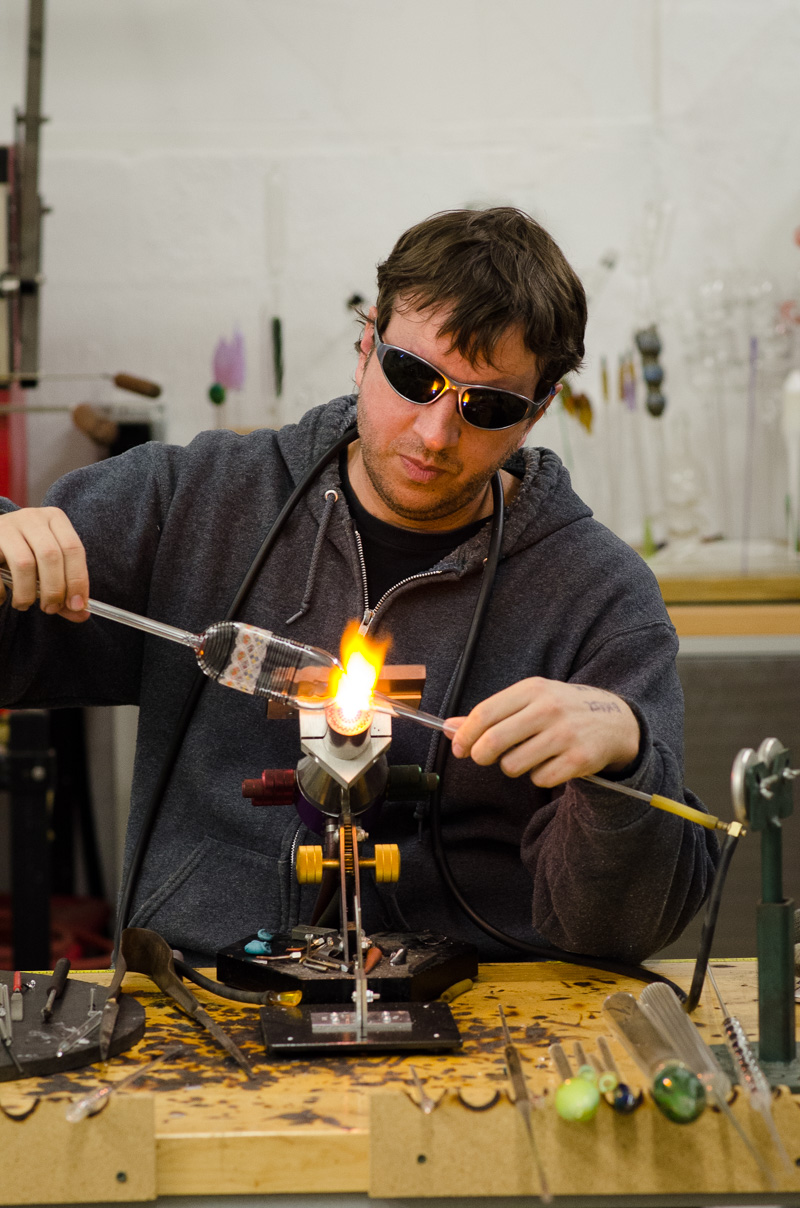
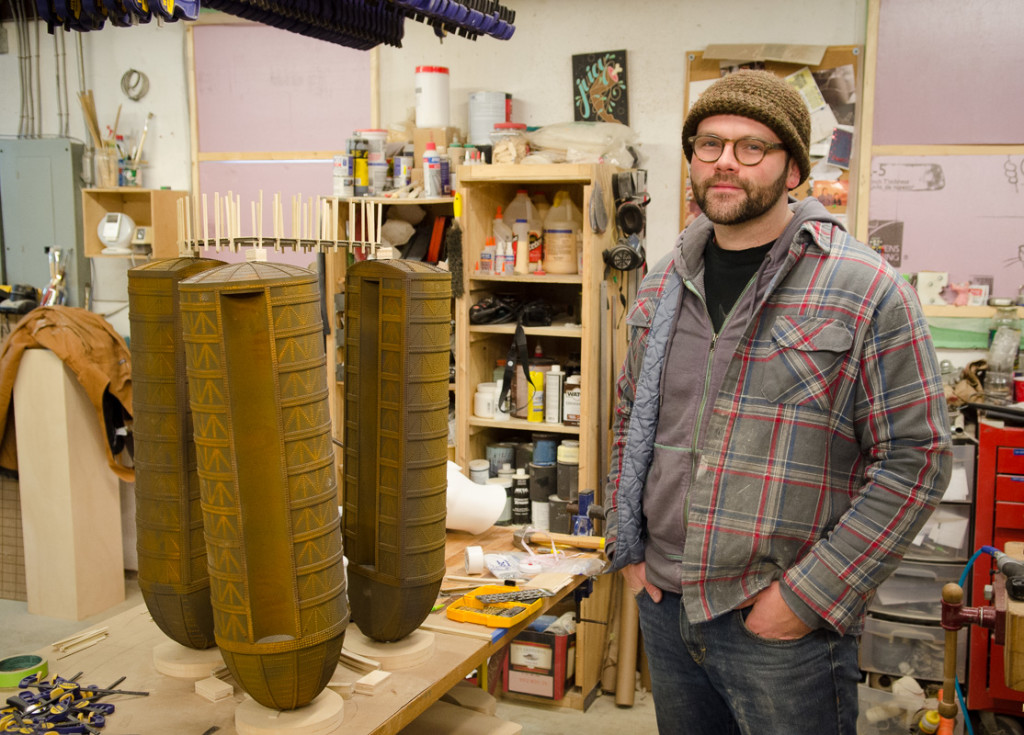
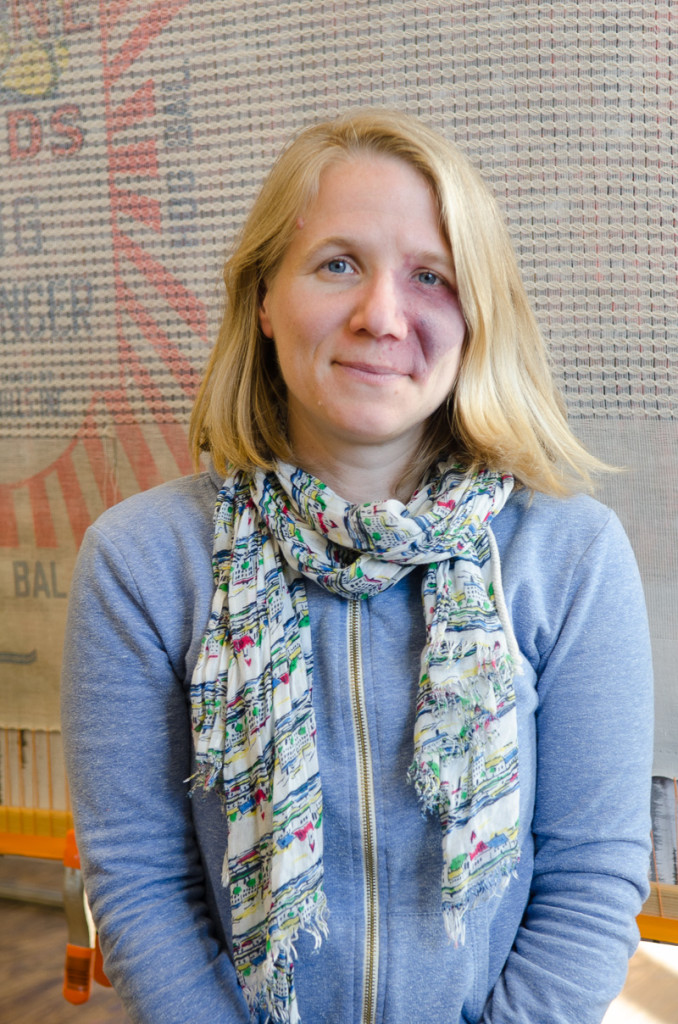


 The resulting images on the vessels are casual and arresting: a fishhook, a frying pan. A turtle. A platter of turtles. Weird lures: a chair, a dead bird, an anatomically correct heart. “[The images] are everyday,” he says, “with a built-in plot. The user brings a story to it.” The drawings–the way they are drawn–evoke graphic novels, too. The objects feel removed from a panel, an “everyday” scene. Holding one of David’s cups, the image loses its primacy immediately to the feeling of the shape.
The resulting images on the vessels are casual and arresting: a fishhook, a frying pan. A turtle. A platter of turtles. Weird lures: a chair, a dead bird, an anatomically correct heart. “[The images] are everyday,” he says, “with a built-in plot. The user brings a story to it.” The drawings–the way they are drawn–evoke graphic novels, too. The objects feel removed from a panel, an “everyday” scene. Holding one of David’s cups, the image loses its primacy immediately to the feeling of the shape. Both David and Elisa have worked a tricky balance the last three years: having a second child, creating their own work (David in residence, Elisa grabbing time in other studios), and working collaboratively on David’s pieces for the first time this winter. (“It’s Elisa’s turn next, David says, about the possibility of doing future residencies.) Their bread-and-butter studio collaboration will extend outward, too: David and Elisa plan to invite other clay artists, starting with Michael Klein, to make limited edition vessels with decals.
Both David and Elisa have worked a tricky balance the last three years: having a second child, creating their own work (David in residence, Elisa grabbing time in other studios), and working collaboratively on David’s pieces for the first time this winter. (“It’s Elisa’s turn next, David says, about the possibility of doing future residencies.) Their bread-and-butter studio collaboration will extend outward, too: David and Elisa plan to invite other clay artists, starting with Michael Klein, to make limited edition vessels with decals.